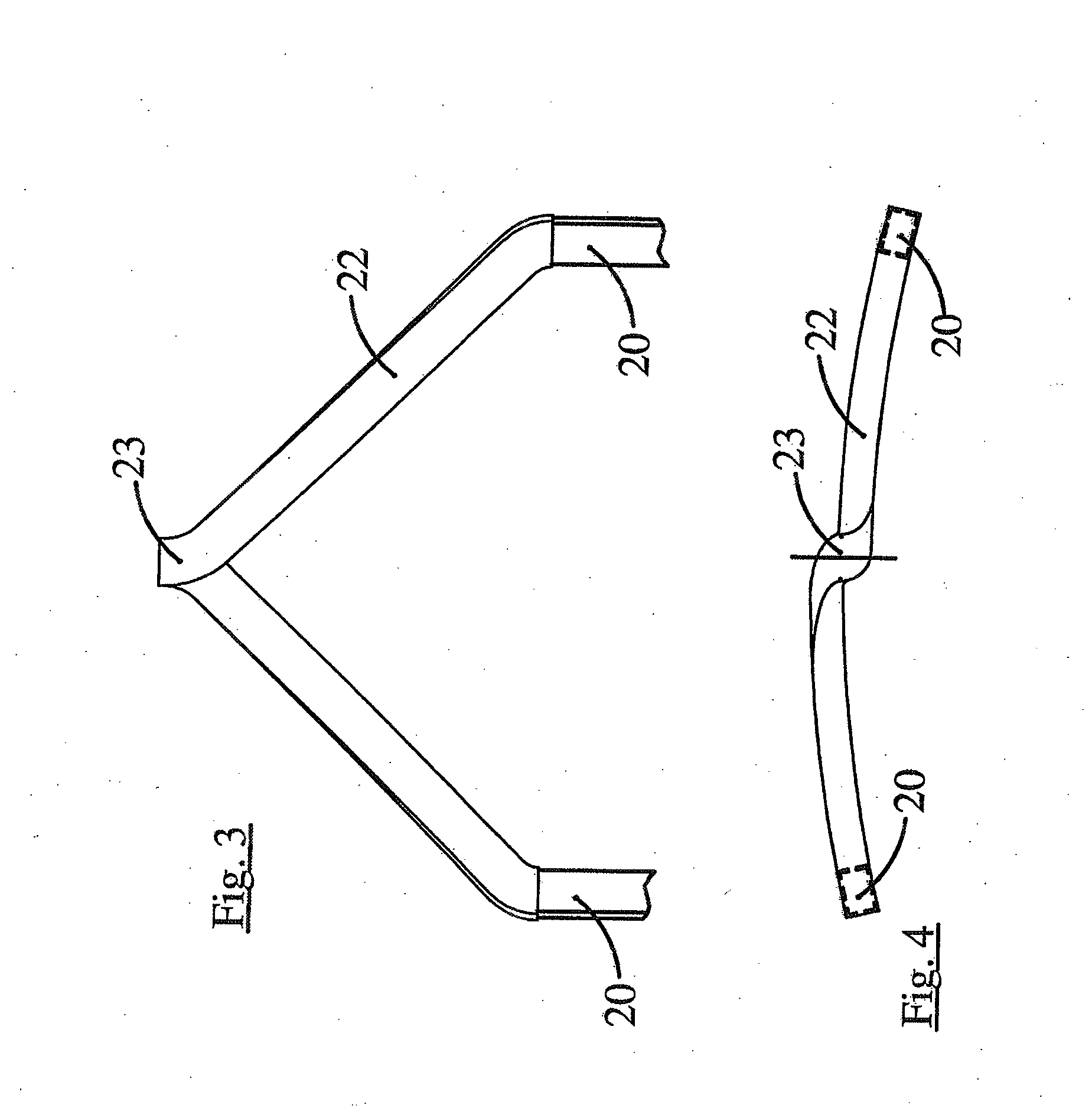Stator or rotor with interlaced wire groups forming an intertwined wave winding
a technology of interlaced wire and intertwined wave, which is applied in the direction of windings, dynamo-electric components, synchronous machines, etc., can solve the problems of increased deficiency, increased production difficulty of machines, and lack of uniform thickness
- Summary
- Abstract
- Description
- Claims
- Application Information
AI Technical Summary
Benefits of technology
Problems solved by technology
Method used
Image
Examples
Embodiment Construction
[0027]As shown in FIG. 1, first, two wire groups 10 and 12, comprising parallel wires formed and interlaced with one another, are produced, which are then put together and intertwined by winding onto one another to form a wave winding identified in its entirety by reference numeral 14, which is introduced into a stator or rotor, i.e., an electrical element for an electrical device hereafter exemplarily depicted as stator 30.
[0028]The two wire groups 10 and 12, in this example, match identically, but may also have differently shaped head portions. They each comprise three parallel wires 15, 15′ whose beginnings are marked 16 and 16′ and whose end is marked 18 and 18′, respectively. In each of the two wire groups 10, 12, the three wires 15, 15′ extend in wavelike fashion between their respective beginning and end and in the process form rectilinear straight segments 20, to be introduced into the stator or rotor slots, and head portions 22 which join two adjacent straight segments 20 o...
PUM
| Property | Measurement | Unit |
|---|---|---|
| width | aaaaa | aaaaa |
| circumference | aaaaa | aaaaa |
| length | aaaaa | aaaaa |
Abstract
Description
Claims
Application Information
 Login to View More
Login to View More - R&D
- Intellectual Property
- Life Sciences
- Materials
- Tech Scout
- Unparalleled Data Quality
- Higher Quality Content
- 60% Fewer Hallucinations
Browse by: Latest US Patents, China's latest patents, Technical Efficacy Thesaurus, Application Domain, Technology Topic, Popular Technical Reports.
© 2025 PatSnap. All rights reserved.Legal|Privacy policy|Modern Slavery Act Transparency Statement|Sitemap|About US| Contact US: help@patsnap.com



